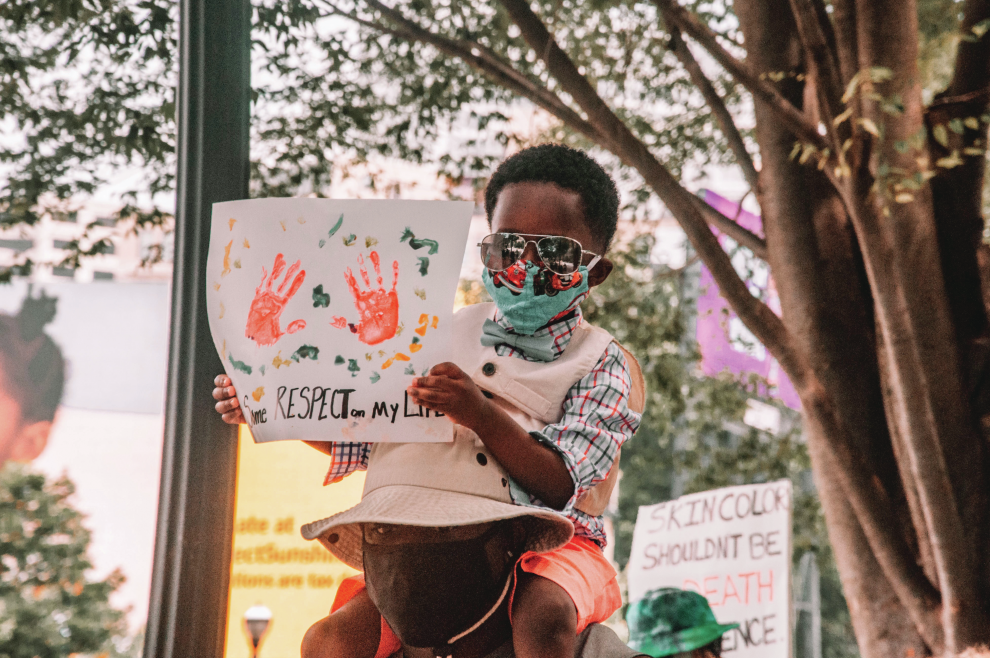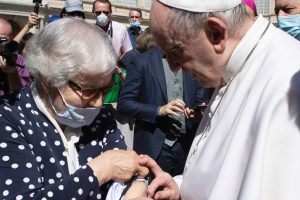One of the attorneys where I work is Black and a father of three children; his oldest son is 11. My colleague and his wife take care to limit their children’s exposure to social media and TV, including the news, so that they can be the ones controlling the narrative within their household. I feel for him and his wife, with the enormity of the task of deciding how much of the world’s sadness, sickness, and cruelty should be invited into their family room. I feel for them weighing at what point it is appropriate to stop sheltering their children from the pain of the world, because it’s time for them to learn more about its reality.
I remember when our own children were young and the news was on. If something especially heinous would come on, I’d rush for the remote, to hit mute, to power off, before my children could see or hear about some horror of the human condition that maybe I could delay their knowledge of, if only for a few more days, weeks, months.
So, when my colleague’s 11-year-old saw his first Black Lives Matter sign last summer, he did not understand the sign. He did not yet know that police had recently killed George Floyd or Breonna Taylor; he had not yet heard of police brutality; his young imagination could not fathom the ways we can hurt one another. His parents carefully curated his exposure to information unveiling our nation’s sinful history of racism, and I’m not sure how much he had learned of it at school.
When my friend’s son saw the Black Lives Matter sign for the first time, he read it out loud to his dad, incredulously. “Black Lives Matter?” he said. “Why would you make a sign that says that? That’s like making a sign that says ‘Air Matters.’ You don’t need a sign to tell you something like that.”
This little boy’s words have stayed with me. We are so far from racial equity in the United States that we actually need to put up signs that are so obvious that an 11-year-old doesn’t understand them. My colleague never told me how he answered his son. My heart breaks in what the truth of the answer is. We do need the signs, little child, because to some people it isn’t obvious at all that Black lives matter.
But my friend’s son will learn too soon the terrifying truth that, for most of our country’s history, Black lives have not mattered and were not protected. At points in our history, Black people were not considered fully human, allowing them to be bought and sold and lynched and redlined with impunity. Black lives were blocked from certain neighborhoods and schools. Black people were excluded from hospitals, sports teams, and clubs.
The Catholic version of the expression “Black Lives Matter” is “Black Lives Are Sacred.”
Even now, many people want to deny the devastatingly traumatic results of 400 years of oppression and pretend that the playing field is level. They pretend not to understand why “Black Lives Matter” cannot be written “All Lives Matter,” because they are intent in their commitment to their dangerous fable that there is no difference between the treatment of races in the United States. It is to help these very people—to push them to think, to care, to learn, and to understand—that we put up the signs.
The Catholic version of the expression “Black Lives Matter” is “Black Lives Are Sacred.” The Catholic belief in the dignity and sanctity of all human life has propelled a group of Milwaukee Catholics, each week since last summer, to organize a public witness on busy street corners. The purpose is to stand for racial justice, with “Black Lives Are Sacred” as the unifying message. As we approach the one-year mark of George Floyd’s murder this coming May, this group gives us a strong example of continued involvement. As we are all called to work for racial justice, we must look into our own schools and families to make sure all are welcome and to ensure that our institutions reflect the diversity of our society. Consider the following practices as we continue to move forward, together.
Check yourself
Before parents can impart a value of racial justice to children, we need to make sure we are on the right road ourselves. Do our friends reflect the diversity we claim to value? Do our choices in where to shop and do business have an intentionality that leans toward support of marginalized communities? Do we watch movies, read books, and attend events that bring us to a better understanding of cultures outside of our own and of racial justice? Do we speak out and protest when we see racial injustice? Our children are learning from our choices and internalizing how they should live.
Opportunities at school
As more schools return to in-person instruction, parents can help retain or create a school culture and curriculum that respects Black lives as sacred. A school committee focused on diversity and inclusion that has a diversity of parents in leadership positions can provide resources, community-building opportunities, and enhancements that move a school toward equity.
As a family
There is truth that a family that prays together stays together, and true open-hearted prayer leads to action consistent with gospel values. In your family prayer before dinner or before bed, pray for the wisdom to be led as a family where you are needed to be part of a movement to eradicate racism. Then, as a family, take action—whether it’s volunteering at a local nonprofit together; going to church in a different neighborhood; or building a relationship with a family from school or the community that you may have ordinarily overlooked.
This article also appears in the March 2021 issue of U.S. Catholic (Vol. 86, No. 3, pages 43-44). Click here to subscribe to the magazine.
Image: Unsplash













Add comment